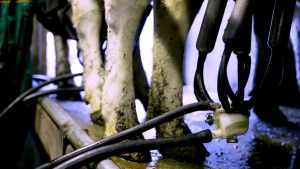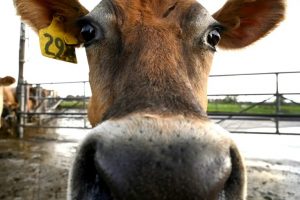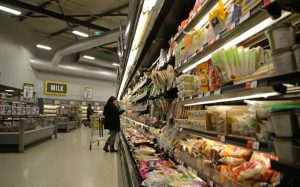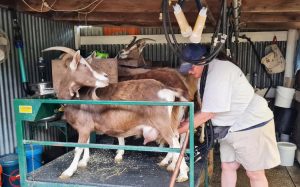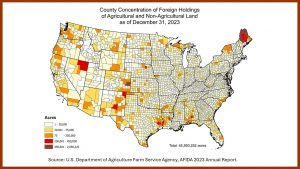
He was one of 100 vehicles that converged in a smaller protest in Invercargill, while the rest of Groundswell NZ supporters were encouraged to join the “We’re not going to take it” protest in Auckland, Wellington, Christchurch and Dunedin.
Swney said he’d been in contact with his accountant regarding the cost of the proposed tax and had been told that for an “average size” dairy farm of about 360 cattle, it could cost about $80,000 per year.
“And we’re a bit bigger than your average dairy farm, so we’re looking at something like $150,000.”
He did not know how farmers would survive the cost, alongside other increasing regulations.
The protest was in response to the Government’s release of the He Wake Eka Noa consultation document, which would proposed farmers pay a levy on farm emissions from 2025.
Federated Farmers say the plan aims to reduce sheep and beef farming in New Zealand by 20% and dairy farming by 5%.
This was the third protest Swney had taken part in, but he did not believe the Government was listening to farmers.
“Farmers have been totally ignored, it’s so depressing. Mentally, financially and physically, it’s just so hard,” he said.

“We should have been included [in the consultation] … we do all the right planting along waterways, all the riparians and natives … and we get nothing for it.”
Wyndham sheep, beef and dairy farmer Brent Robinson said protesters were very worried the Government was taking carbon sequestration out of their hands.
“I’m extremely worried about the amount it will cost … and the flow on effect it will have for all of New Zealand.”

Agriculture Minister Damien O’Connor said he had not met with the Groundswell protesters and he did not plan to.
“They’re entitled to have their voice. I want to see solutions not slogans and I think some of them are completely wrong.”
When asked if it was an embarrassing crowd, O’Connor said, “embarrassing for them… not as many (protesters) as they thought, I guess.”
Invercargill MP Penny Simmonds said the Southland Groundswell protest reflected the strength of farmer feeling.
“I’m deeply concerned at the implications of the Government’s proposals, which will effectively price farming off the market for a large number of people within the sector and risk leaving our rural communities in despair.
“This province, and indeed this country, needs the rural sector. We’ve said it time and again how crucial farming is to our economy – that’s why I’m dismayed at the way the government constantly wants to nail the sector,” Simmonds said.
Throughout the country and including Invercargill Voices For Freedom protesters were visible at the rural protest.
Earlier in the day Groundswell NZ co-founder Bryce McKenzie said the group had not aligned itself with VFF, but admitted they didn’t have any options if the organisation came to the protests.
“They asked if they could come along and then said they were coming anyway. As long as their signage sticks to the message about not taxing food production there isn’t much we can do about it.”
The Government described the proposal as “an important step forward in New Zealand’s transition to a low emissions future and delivers on our promise to price agriculture emissions from 2025”.
Prime Minister Jacinda Ardern, when the proposal was released said it aimed to give New Zealand farmers control over their farming system, providing the ability to reduce costs through revenue raised from the system being recycled back to farmers, which would fund further research, tools and technology and incentives to reduce emissions.




